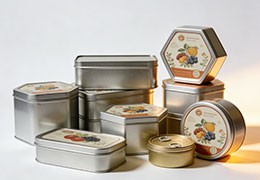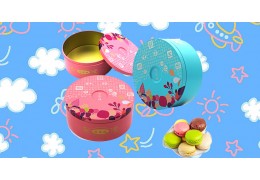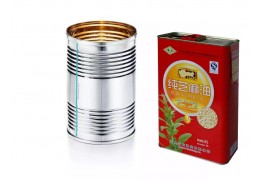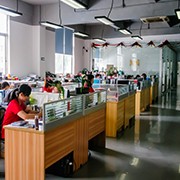Personalized metal...
Six common problems in the automatic production process of packaging boxes
With the development of AI technology, there are a wide variety of packaging automation equipment, and the differences between each equipment are also very large. In actual use, various problems will be encountered. This article briefly analyzes the causes of six common problems for reference.
1. Cursor problem
In the automatic production process of packaging boxes, positioning and heat sealing and positioning cutting are often required, and electric eye cursors need to be set up for positioning. The size of the cursor, different packaging opportunities have certain differences. Generally, the width of the cursor is required to be greater than 2mm and the length of the cursor is greater than 5mm. The cursor generally uses a dark color that has a large contrast with the background color, and black is easy to use.
The distance between the cursors is used to determine the length, so the error between the actual distance and the design value should not be too large, generally only 0.5mm error is allowed. For many automatic packaging equipment, the tracking effect of negative deviation is better than that of positive deviation, so it is recommended to design negative deviation.
2、the friction coefficient problem
The friction force in the packaging process is often both a drag force and a resistance force, so its size should be controlled within an appropriate range. Coils for automatic packaging generally require a small inner layer friction coefficient and a suitable outer layer friction coefficient. If the friction coefficient of the outer layer is too large, the resistance during the packaging process will be too large, causing the material to be stretched and deformed. If it is too small, it may cause the dragging mechanism to slip, resulting in inaccurate electric eye tracking and cutting positioning.
The friction coefficient of the inner layer of the composite film mainly depends on the content of the opening agent and the slip agent in the inner layer material, as well as the stiffness and smoothness of the film. The corona treatment surface, curing temperature and time in the production process will also affect the product. friction coefficient.
3. Heat sealing problem
The low temperature heat sealability is mainly determined by the performance of the heat seal layer resin. The composite film roll used for automatic packaging should choose a heat seal material with good thermal viscosity. For packaging with poor heat resistance, low temperature heat sealing materials should be used; for heavy packaging, heat sealing materials with high heat sealing strength, high mechanical strength and good impact performance should be used; for high-speed packaging machines, low temperature heat sealing and hot adhesive strength should be used High-quality heat-sealing materials; for products with strong pollution such as powders and liquids, heat-sealing materials with good anti-pollution properties should be selected.
4, heat sealing extrusion PE problem
During the heat-sealing process of the composite film, PE is often extruded and stuck on the heat-sealing film, which affects the normal production. At the same time, the extruded PE is oxidized and smoked on the heat-sealing die and emits peculiar smell.
Heat-sealing extruded PE can generally be solved to a certain extent by reducing the heat-sealing temperature and pressure, adjusting the formula of the heat-sealing layer, and modifying the heat-sealing film to reduce the pressure at the edge.
5. The problem of heat sealing pressing through and pressing off
Press-through means that the packaging material is squeezed by external force to form a penetrating hole or crack. The reasons for this are generally: too much heat sealing pressure, rough heat sealing mold, edges and corners or foreign objects, wrong thickness of packaging material, The structure of the packaging material is not selected properly and the packaging mold is improperly designed.
6, heat sealing leakage problem
Leakage is due to some factors, so that the parts that should be melted and bonded by heating are not sealed. There are generally several reasons for the leakage of sealing: insufficient heat sealing temperature, contamination of the sealing part, problems in equipment, operation and packaging materials.














Latest comments